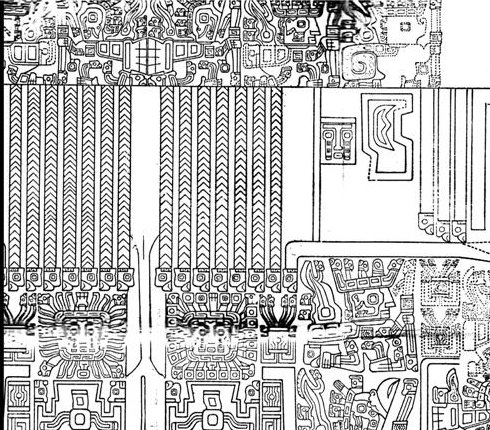 There are 5 of this type of glyph, with a young one in the center:
71 * 5 = 355 ↔ day 355 = December 21 (the day of solstice). Although we could equally well have counted 7 * 15 = 105 = April 25 = 355 - 250. In the tresses of Pachamama this number (104 + 1) had a special place:
The keyword here is moe = sleeping time and similar - an adequat description for the time when the sun is returning down, when his period of the day has reached to its end. Or more generally when any period was at its end. Cfr Sunday. All these glyphs are marked. Compare with Ea5-20, an unmarked glyph. The three at the beginning (Ea7-9, 12, 15) are different in shape compared to the following pair. Ea7-17 and -19 have longer necks and Ea7-21--22 are completely different, only their 'hanging heads' reminding us of moe. Are they representing hanging fruits (hua)? That they are two perhaps instead implies hua = testicles? The bending of the beak is at its maximum in the beginning of the sequence, whereas the bending of the neck appears to be at it maximum in Ea7-12. For some reason that bird also has a 'body' similar to that in Ea7-19. |
||||||||||||||||||||||||||||||||||||||||||||||||||||||||||||||||||




